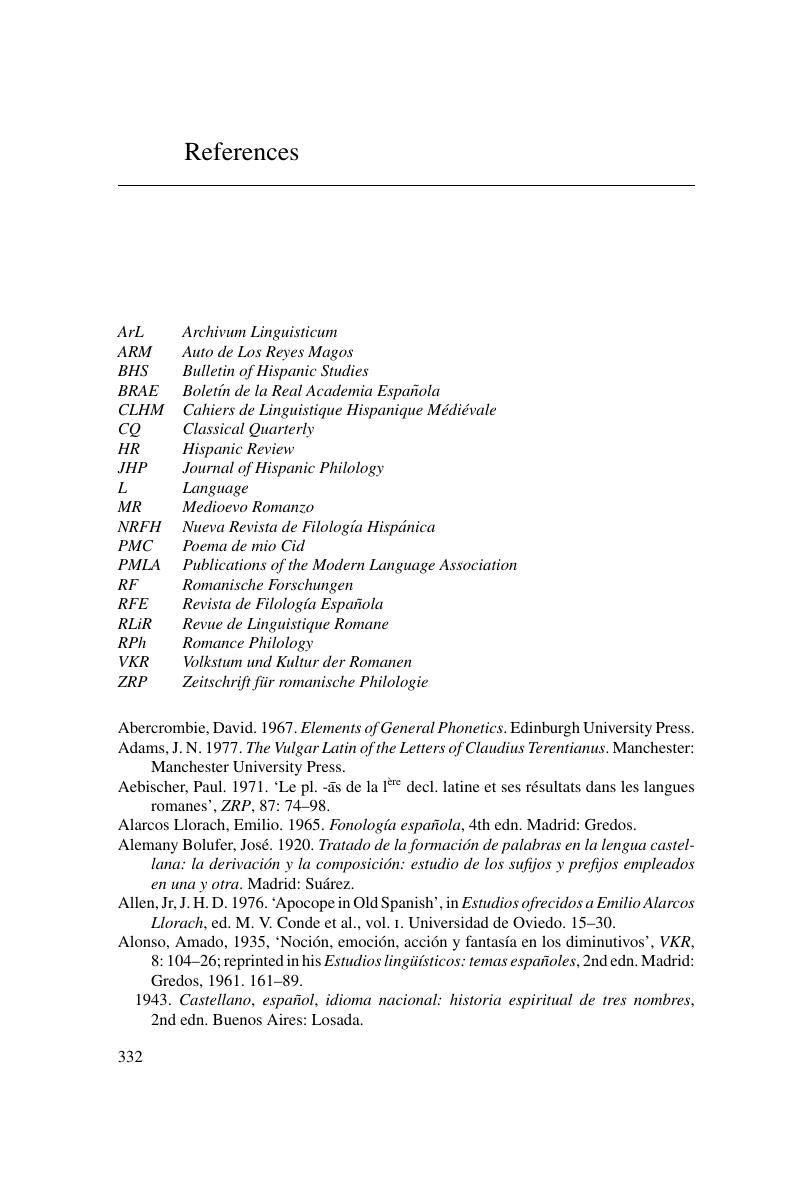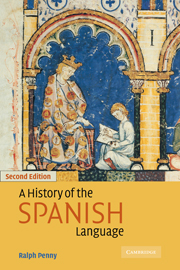Book contents
- Frontmatter
- Contents
- List of maps
- List of tables
- Preface to the first edition
- Preface to the second edition
- List of abbreviations and symbols
- 1 Introduction
- 2 Phonology
- 3 Morpho-syntax
- 4 Lexis
- 5 Semantics
- 6 Past, present and future
- Glossary of technical terms used in the text
- Topics for discussion and further reading
- References
- Word index
- Subject index
- References
References
Published online by Cambridge University Press: 05 June 2014
- Frontmatter
- Contents
- List of maps
- List of tables
- Preface to the first edition
- Preface to the second edition
- List of abbreviations and symbols
- 1 Introduction
- 2 Phonology
- 3 Morpho-syntax
- 4 Lexis
- 5 Semantics
- 6 Past, present and future
- Glossary of technical terms used in the text
- Topics for discussion and further reading
- References
- Word index
- Subject index
- References
Summary

- Type
- Chapter
- Information
- A History of the Spanish Language , pp. 332 - 340Publisher: Cambridge University PressPrint publication year: 2002



